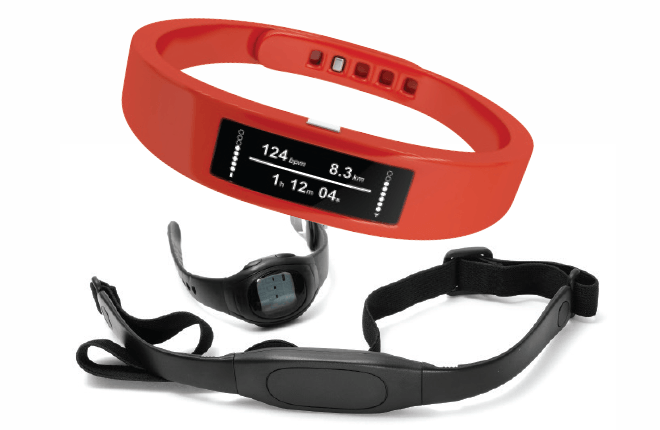

“WE miss you! It's been a while since your last workout and we would like to see you back on the tracks." This is part of an email that a friend, who is in her late thirties, received recently. She has put off running for the last six months as she has been recovering from a minor injury.
The email she received is a service provided by a fitness tracking app she uses to help her improve her performance in preparing for a half marathon. The app also aids her efforts to maintain a healthy lifestyle. The constant, but gentle, reminders have motivated her to stay fit despite her current state of health.
With such a personalised approach to marketing, it is no wonder that the app has been downloaded by more than 10 million users across various mobile platforms. And this is just one of the hundreds of highly competitive applications in the digital arena.
The popularity of such technology advances signals an increased awareness among people, particularly among the affluent, of the importance of keeping fit and ultimately living to an older age undeterred by the limiting lifestyle diseases that have beleaguered the silver generation.
It also characterises the vested interest this growing group of affluent individuals have in their well-being and in having a say in the decisions about their healthcare. Many of the decisions involve lifestyle choices, such as making informed, intelligent decisions on exercise, diet and relaxation, and not being dependant on the public mechanism to stay healthy.
As the country progresses towards Vision 2020, much of its workforce, which makes up 46% of the 30 million population, will start to age. According to the National Statistics Department (NSD), Malaysia will become an ageing population — with 7% or more of its population aged 65 and above — by 2021.
The number of people in this age group is projected to increase more than threefold to 4.4 million (or 11.4% of the estimated 38.6 million population) by 2040 from 1.4 million in 2010. Meanwhile, the potential workforce, or those aged between 15 and 64, is expected to shoot up to about 26.6 million from 19.3 million in 2010.
The UN, however, estimates in its World Population Ageing: 1950-2050 report that Malaysia will reach those figures by 2035 and the population will be much larger in 2040.
The growing numbers are a boon for those in the healthcare ecosystem as these businesses will flourish as people become savvier and more engaged with their environment.
Players step it up
According to a report by global growth consulting firm Frost & Sullivan, total healthcare expenditure in Malaysia could exceed US$20 billion (RM74.2 billion) by 2025, with government spending focused on the development of public healthcare infrastructure and the control of chronic and infectious diseases. Meanwhile, private healthcare spending, including personal health insurance, is expected to rise from 46% of the total healthcare expenditure currently to 50% by 2020.
The increase in healthcare expenditure, which stood at US$12 billion in 2013, will prominently focus on health information technology, electronic health and mobile health (mHealth) facilities, the firm notes.
In its Asia-Pacific Healthcare Outlook 2015 report, Frost & Sullivan suggests that private services and medical devices provide the “largest near-term opportunities”, while new sectors of growth are in home healthcare, aged care and medical technology. One key trend, which was once considered a novelty, is the home monitoring of lifestyle diseases. The demand for mHealth systems is anticipated to rise as the government continues to encourage aged care at home.
The mHealth technology allows medical practitioners to remotely monitor their patients’ health, and have real-time access to their heart condition, blood pressure and other biometrics via their desktop or laptop computers, while the patients stay at home.
The report says the consumer focus on wellness is also driving the shift from disease management to preventive care, which has led to the growth of the wearable devices industry. There are currently more than 200 brands of wearable devices in four market segments — sports, fitness and well-being; home monitoring; remote monitoring; and professional healthcare.
The report adds that globally, 19% of people without any chronic disease use these fitness trackers, while the younger generation use such devices to track calorie intake.
The value of familiar brands — such as Jawbone, Fitbit, Fitbug, Nike and Samsung, as well as new entries from the likes of Microsoft and Garmin, which are solely dedicated to personal health and wellness — are expected to double to US$8 billion by 2018, reports medical portal WebMD. Device makers are also looking at expanding into sensor-laden fitness clothing as well as wearable tech headbands for meditation.
Another segment that is seeing growth is nutraceuticals. The term, a portmanteau of “nutrition” and “pharmaceuticals”, refers to any product — whether it is a fortified food or dietary supplement — that provides health or medical benefits in addition to its basic nutritional value. The nutraceutical market in Asia-Pacific is expected to expand 4.2% by 2020. The dietary supplement segment made up 23% of market in 2013.
The report notes an increase in recreation and rejuvenation therapies, as more consumers seek out alternative medicines, wellness spas and rejuvenating retreats.
To boost the alternative medicine sector, the Ministry of Health enacted the Traditional and Complementary Medicine Act in 2013 to give accreditation to the industry. Within a year, more than 12,000 practitioners have registered with the Traditional and Complementary Medicine Council.
This article first appeared in Personal Wealth, The Edge Malaysia Weekly, on April 20 - 26, 2015.
Save by subscribing to us for your print and/or digital copy.
P/S: The Edge is also available on Apple's AppStore and Androids' Google Play.